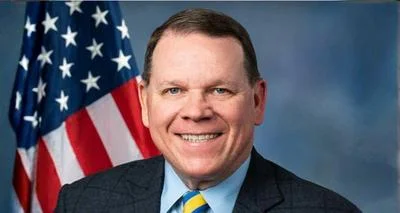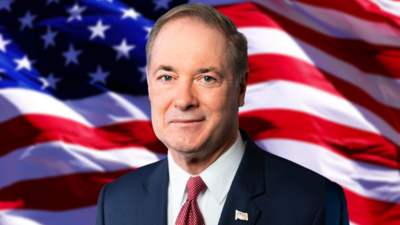WASHINGTON, D.C-Today, Senator Edward M. Kennedy released the following statement inresponse to the Republican remarks on the Employee Free Choice Act.
“Opponents of American workers are trafficking in the politics of fear, by grosslymischaracterizing the policies in the Employee Free Choice Act. They’re afraid to give workersa voice, so they’re obscuring the truth. I think it’s important to set the record straight. TheEmployee Free Choice Act does one thing - it empowers workers. It gives them the freedomto choose - without fear of intimidation or harassment - whether they want unionrepresentation. There’s nothing more fair or democratic than that."
SETTING THE RECORD STRAIGHT:
MYTHS AND FACTS ABOUT THE EMPLOYEE FREE CHOICE ACT
MYTH: The Employee Free Choice Act eliminates elections for choosing a union.FACT: The Employee Free Choice Act does nothing to change employees’ ability to get asecret ballot election.
WHAT ARE THEY MISSING? Under current law, workers can try to form a union by requestingan election or by using cards to show that the union has majority support. However, anemployer can veto the workers’ decision about how they want to choose a union, and force anelection. The Employee Free Choice Act takes this veto power away from employers, givingworkers the power to decide how they want to choose their representative. If workers wantan election, they can have one. If they fear employer intimidation, and want to use majoritysign-up, they have that choice.
MYTH: The Employee Free Choice Act restricts what an employer can say during a unionorganizing campaign.FACT: The Employee Free Choice Act does absolutely nothing to change what an employercan or cannot say during a union organizing campaign.
WHAT ARE THEY MISSING? Employers are prohibited from threatening or coercing workers.The Employee Free Choice Act does nothing to change this aspect of current law.However, despite the law, threats and coercion - both lawful and unlawful - are rampantduring many union organizing campaigns. The Act does two things to close the floodgates ofabuse: it strengthens the penalties for conduct that is already illegal under current law, andallows employees who fear threats or intimidation by their employer to minimize this abuse bychoosing a union more quickly through majority sign-up.
MYTH: The Employee Free Choice Act allows “union bosses" to coerce workers into supportinga union.FACT: Coercing workers to support a union is illegal, and it’s a very rare occurrence.
WHAT ARE THEY MISSING? It is already illegal for a union or co-worker to try to coerce aworker into supporting a union. Nothing in the Employee Free Choice Act changes this.Historically, such coercion by unions has been a nearly unheard-of problem. Opponents of theAct cite one study suggesting that there have been 113 NLRB cases where a unionrepresentative coerced someone into signing a card over the last 60 years. Even if we acceptthat as true, it’s a drop in the bucket compared to the number of coercion charges filedagainst employers - over 18,000 last year alone. It is employer coercion that is the realproblem, because it is employers - not co-workers or union organizers - who have the powerto hire and fire workers.
MYTH: Secret ballot elections have been the rule for 60 years.FACT: Until the mid-1960s - about 40 years ago - employers could not require workers touse an NLRB election to choose a union.
WHAT ARE THEY MISSING? Majority sign-up has been used since 1935. Until the mid-1960s,it was usually an unfair labor practice for an employer to refuse to bargain with a unionselected by majority sign-up. There’s a long history of majority sign-up, and there is noevidence that it has caused any of the problems that opponents of the Act suggest.
MYTH: The Employee Free Choice Act will force employees to work under “governmentimposedcontracts."FACT: The Employee Free Choice Act provides incentives to negotiate that help workers andcompanies get a first contract. Arbitration is used only as a last resort.WHAT ARE THEY MISSING? Under current law, there are no incentives for employers tobargain in good faith for a first contract. One study showed that more than one third of unionelections victories do not result in a contract for workers.
The Employee Free Choice Act gives the parties a schedule and a framework for negotiations -providing an incentive to sit down and talk. The parties can always choose to extend thisschedule by mutual agreement - the framework just keeps one party from stonewalling. TheAct also provides for mediation to help the parties reach their own solution. Such mediation -provided by the Federal Mediation and Conciliation Service - has an 86% success rate athelping unions and management agree on a contract. Binding arbitration is used only as a lastresort, and the parties can always avoid it. They just have to stay at the table and keeptalking. Most Canadian provinces have a similar system in place, and they have found thatbinding arbitration is used very infrequently.









